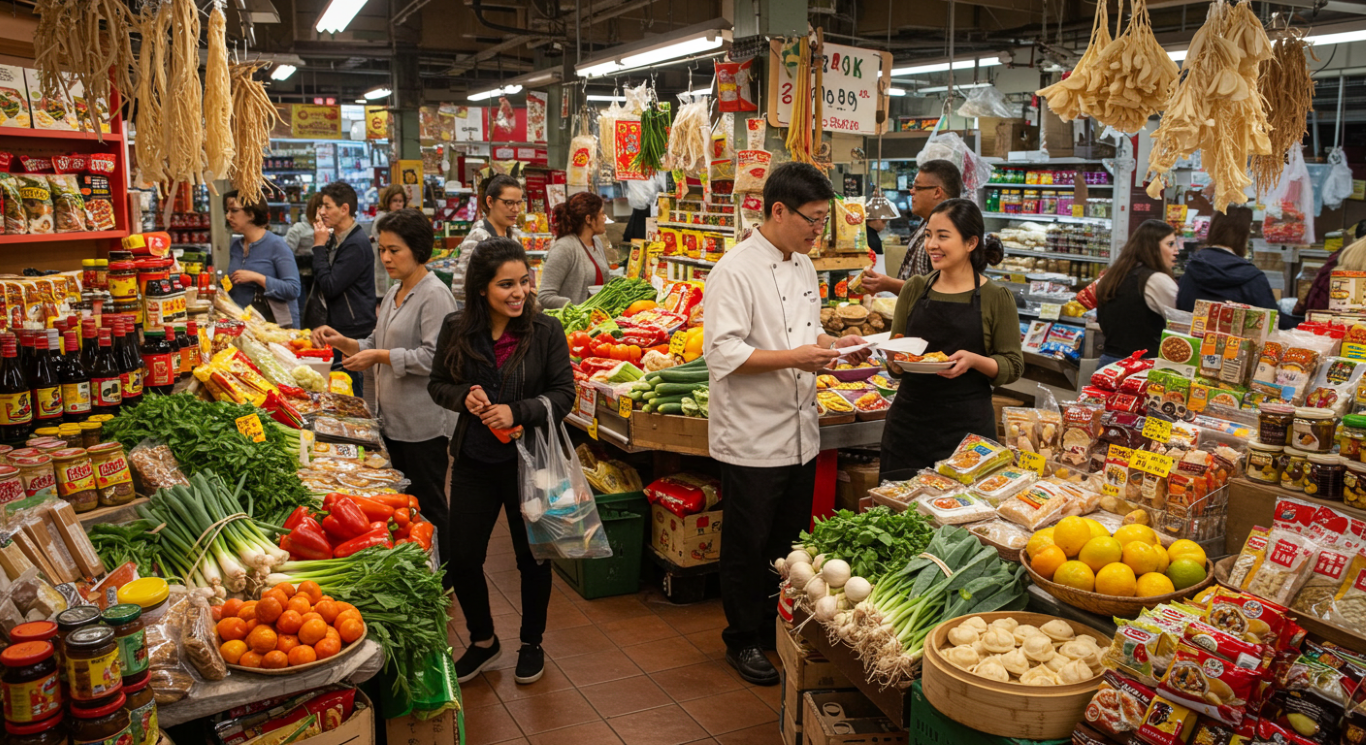Canada’s culinary landscape is undergoing a delicious transformation. The once-niche appeal of Asian cuisine has blossomed into a mainstream phenomenon, and with it, a surging demand for authentic Asian grocery products. From the bustling streets of Vancouver’s Chinatown to the diverse neighborhoods of Toronto, the aroma of spices and the vibrant colors of imported ingredients are becoming increasingly familiar. This burgeoning appetite for genuine Asian flavors presents a significant opportunity for wholesalers and manufacturers looking to expand their reach in the Canadian market.
Market Analysis:
The driving force behind this culinary evolution is multifaceted. Firstly, Canada’s demographic makeup is rapidly diversifying, with a growing Asian population seeking the familiar tastes of home. This demographic shift has created a substantial and ever-expanding consumer base eager to access authentic ingredients. Beyond this, there’s a broader cultural shift towards embracing diverse cuisines. Canadians are increasingly adventurous in their food choices, driven by a desire to explore new flavors and culinary experiences.
Specific regional cuisines are experiencing remarkable growth. Korean cuisine, fueled by the global “Hallyu” wave and the popularity of dishes like kimchi and Korean BBQ, has become a culinary sensation. Japanese cuisine, with its emphasis on fresh ingredients and intricate flavors, continues to captivate food enthusiasts. Southeast Asian cuisines, including Thai, Vietnamese, and Filipino, are also gaining traction, offering a vibrant array of aromatic curries, flavorful noodles, and unique ingredients.
Statistics paint a clear picture of this growth. According to recent trade data, the import of Asian food products into Canada has seen a consistent upward trend. This surge in demand reflects not just a passing fad but a sustained shift in consumer preferences. The desire for authenticity is paramount. Canadian consumers are no longer satisfied with generic “Asian-inspired” products; they crave the genuine ingredients and flavors that transport them to the heart of Asia.
Consumer Trends:
The COVID-19 pandemic further accelerated the trend of “home cooking,” with many Canadians rediscovering the joy of preparing meals from scratch. This resurgence of home cooking has fueled a demand for high-quality ingredients and authentic flavors. Consumers are eager to recreate their favorite restaurant dishes in their own kitchens, seeking out the specific sauces, spices, and noodles that make those dishes truly authentic.
Social media platforms and food bloggers have also played a crucial role in shaping consumer preferences. Platforms like Instagram, TikTok, and YouTube are filled with visually appealing food content, showcasing the vibrant colors and enticing flavors of Asian cuisine. Food bloggers and influencers have become trusted sources for recipes, cooking tips, and product recommendations, driving demand for specific ingredients and brands.
Furthermore, the growing emphasis on health and wellness has influenced consumer choices within the Asian grocery market. Many Asian cuisines are renowned for their use of fresh, natural ingredients and their emphasis on balanced flavors. Consumers are increasingly drawn to products like seaweed, tofu, fermented foods, and organic spices, recognizing their health benefits and nutritional value. The demand for products with clean labels, free from artificial additives and preservatives, is also on the rise.
Opportunities for Wholesalers/Manufacturers:
The burgeoning demand for authentic Asian groceries presents a golden opportunity for wholesalers and manufacturers to expand their market reach. Partnering with a distributor that understands the nuances of the Asian grocery market is crucial for success. A knowledgeable distributor can provide valuable insights into consumer preferences, market trends, and cultural sensitivities.
The benefits of partnering with the right distributor are numerous. A strong distributor can leverage their existing network and expertise to introduce new products to the Canadian market, expand market penetration, and increase sales. They can also provide valuable support in areas such as logistics, inventory management, and marketing.
Furthermore, the rise of e-commerce has opened up new avenues for growth in the Asian grocery market. Online sales platforms provide a convenient way for consumers to access a wide range of products, regardless of their location. Wholesalers and manufacturers can capitalize on this trend by establishing a strong online presence and offering convenient delivery options.
Conclusion:
The growing demand for authentic Asian groceries in Canada is a testament to the country’s evolving culinary landscape. From the diverse flavors of Korean cuisine to the delicate intricacies of Japanese cooking, Canadian consumers are embracing the richness and variety of Asian culinary traditions. This trend presents a significant opportunity for wholesalers and manufacturers to expand their market reach and capitalize on the growing demand for authentic ingredients.
By understanding the market dynamics, consumer trends, and cultural sensitivities, businesses can successfully navigate the flavors of the Asian grocery market and establish themselves as key players in this dynamic and growing industry. By building strong partnerships, embracing innovation, and prioritizing quality and authenticity, businesses can unlock the full potential of this exciting market segment.

